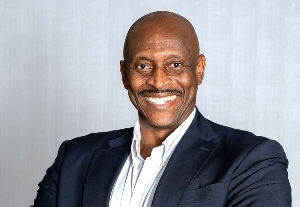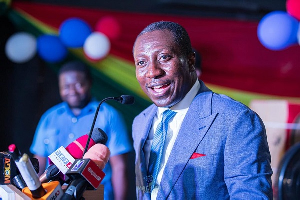Within the Asante Kotoko family and the larger ecosystem of Ghana football, it is widely accepted that Otumfuo Opoku Ware II's 1999 appointment of Herbert Mensah as board chairman of the club ranks above any recent appointments by Manhyia for the club.
The legendary Kwabena Yeboah describes him as the ‘greatest leader in Asante Kotoko’ history, and it is hard to argue this position owing to the incredible things he introduced to the club as board chair.
At the turn of the 20th century, when Ghanaian football clubs began to embrace the concept of transitioning from mere recreational institutions to corporate bodies, Kotoko had an accomplished marketer and media relations expert who knew the strings to pull to give them a head-start and set them on the path of success.
Under his watch, Kotoko garnered a pool of sponsorship deals, used professional training equipment, and achieved remarkable success on the pitch.
All of these were features of his five-year development plan, which aimed to move Kotoko from what it was then to a professionally managed corporate institution.
While these successes are well known and still touted by Asante Kotoko fans, more than two decades after his exit in 2003, little is known about the background story of his appointment in 1999.
In an interview with Dan Kwaku Yeboah, Herbert Mensah opened up on how a conversation with an official of Manchester United in South Africa led to him considering and ultimately accepting the role of board chair of Asante Kotoko.
“Before Sepp Blatter became FIFA president, he went to South Africa for a media engagement, and I was there. Afterwards, there was a gentleman attached to Manchester United who quizzed me about rumours of me being involved in football. I said no and that I had no interest in football, but the guy from Manchester United said, ‘Come on, there are some great things in Ghana, so you got to go,’ I said no, and it led to a big argument then.
“He, however, persuaded me to come to Ghana. He came with me to Accra, and we went with Kwabena Yeboah to Kumasi to have a look at what was going on at Kotoko. We got to the training ground, and there were Dogo Moro and Ebo Mends with just two or three footballs. The training park was horrible, and nothing was happening.
“We turned around to leave, but they asked us to go to Manhyia and see Otumfuo. When we got to Manhyia, they denied us entry because they did not recognize us, so we left. As we got to the car to leave, Kwabena Yeboah broke down into tears because he loved Kotoko and thought the last hope of saving the club was gone.
“Unbeknownst to me, some people who saw us at the training ground had besieged Manhyia to create chaos, that the person who was coming to save the club had been turned away by those at Manhyia. In the end, eleven people were shot. They were shot by some chiefs at Manhyia, and they sustained various degrees of injuries,” he said.
Continuing the story, he explained, “I called Tina, who is the wife of Nana Acheamponghene and a family friend. I told her what happened and explained that I didn’t go there for a job. I told her I was not interested, but she asked me to go to Kumasi and see Nana Acheamponghene and explain myself to him.
“I went to Kumasi, and there was something about the atmosphere. People were staring and pointing at me. I was asked to go to the House of Chiefs because there was a meeting ongoing. I went there, and Nana Acheamponghene was in discussion with some chiefs about Asante Kotoko.
“Nana Acheamponghene eventually announced to the chiefs that this young man was the new chairman of Asante Kotoko, and the whole place erupted. I was carried to Manhyia and put in a room where some normal rituals were performed. Otumfuo Opoku Ware came down and introduced me to the chiefs as the new chair of Asante Kotoko. He told me to fix the team and also tell him how I was going to fix it.”
EK
Sports News of Friday, 12 April 2024
Source: www.ghanaweb.com

















